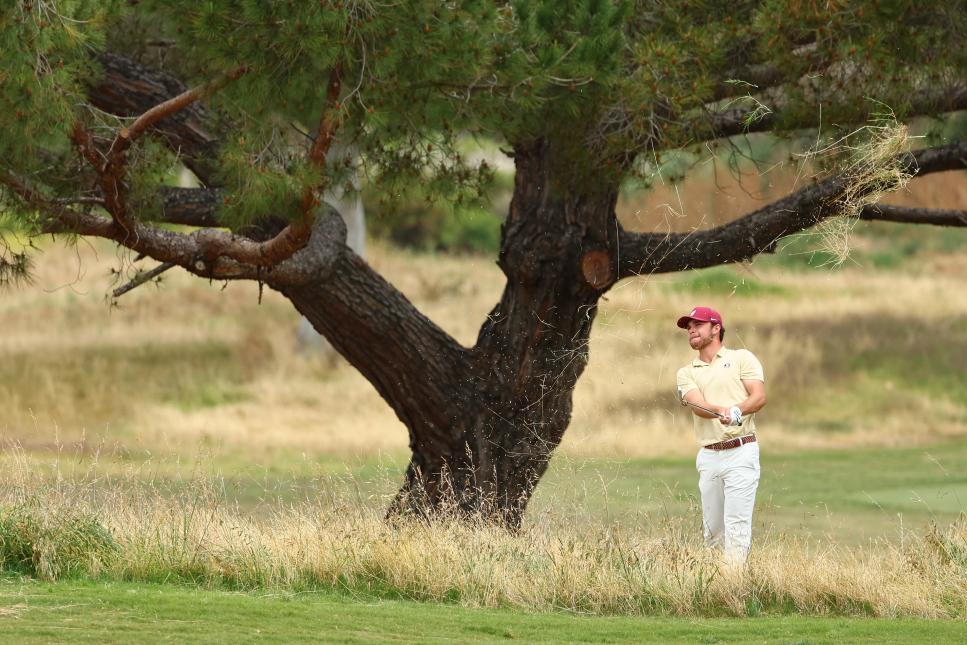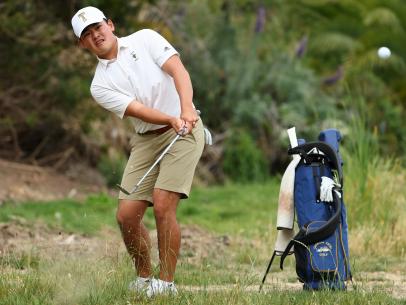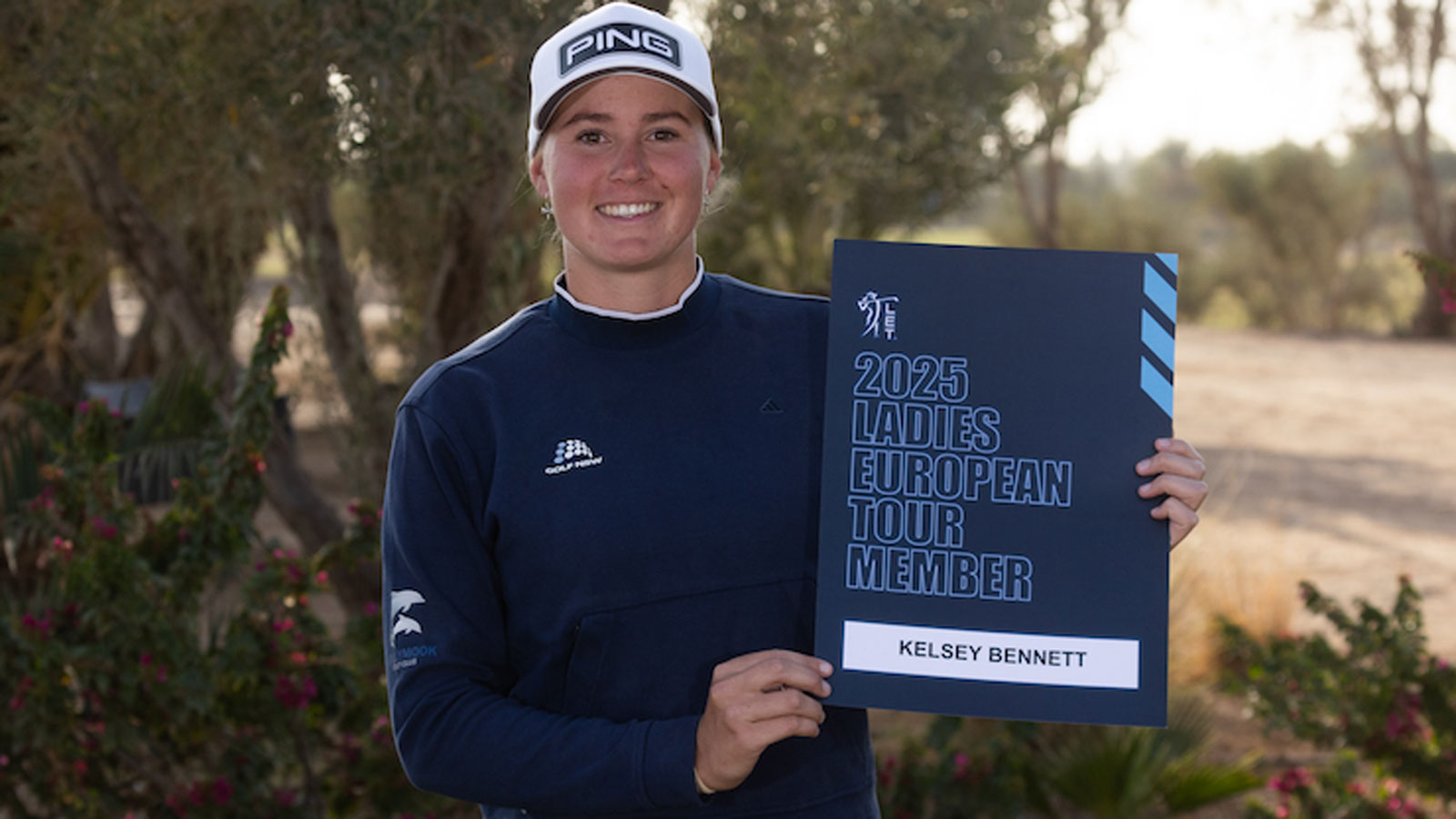La Costa’s rave reviews for NCAAs puts it on stronger path toward being permanent home – Australian Golf Digest

- by Admin
- May 29, 2024

CARLSBAD, Calif. — Bruce Heppler is one of the most esteemed head coaches in men’s college golf. In his 29th year at Georgia Tech, his Yellow Jackets have won more than 70 tournaments and reached the NCAA finals 20 times. A national title trophy remains elusive, but Heppler has seen it all in his sport and is not prone to hyperbole, which made the statement he blurted out this week all the more impactful.
“I think we found a winner here,” he said, “and I hope to high heaven that we can turn it into a permanent site.”
Heppler was speaking of the NCAA Division I men’s and women’s national golf championship tournaments, which were held for the first time in the past two weeks at the Omni La Costa Resort & Spa in northern San Diego. Stanford captured its second women’s title in three years last week by beating UCLA in the championship match, and on Wednesday, Florida State and Auburn face off in the men’s final, with a first national championship on the line for both teams. (Heppler’s squad was beaten in the semis on Tuesday by the Seminoles, though Yellow Jackets sophomore Hiroshi Tai captured the individual title.)
The larger picture here is that University of Texas head coach John Fields, whose university hosted the tournament, along with other coaches, athletic directors and the owners of Omni, want to make Omni La Costa the permanent home of the NCAA finals. This year was the first test of the North Course, redesigned in the past year by renowned architect Gil Hanse; the resort itself in housing the 60 combined teams between the men and women; and the weather—the latter being hardly a worry considering the NCAAs were played the past three years in the 100-degree baking oven that is Scottsdale, Ariz.
La Costa is set to host the NCAAs through the 2026 tournaments and has an application in for two additional years. Golf Digest interviewed a combined nine golfers and coaches to get their reaction to this first edition, and if their enthusiasm is any indication, the permanent site possibility seems more realistic than ever.
“I really think that the course did a really good job of identifying the teams that were playing their best,” said Tennessee head coach Brennan Webb, whose Vols made the 54-hole cut, but not the final eight. “I think it’s incredible that after really only six months of growing that it was in the shape it’s in. It’s going to be a great venue for the next couple of years, and if we go further ahead than that, I think that’s great.
“If you’re going to have a neutral site, I think this is as good as any. Obviously, it’s going to be on the West Coast for the Golf Channel people, and that’s great for our sport.”
“It’s way more enjoyable than Scottsdale,” said Jake Amos, head coach of East Tennessee State, which also made the cut but not match play. “There’s no real advantage anymore to the different [tee time] waves because of the heat. The location was perfect. The greens were probably a little firm because they’re new, but, overall, I thought it was a great experience, especially the hotel and everything.”
Florida State’s Cole Anderson hits from the rough during the Division I Men’s Golf Championship.
C. Morgan Engel
For the first time, all the teams stayed on-site, making it extremely convenient for them to practice at any time. Other than maybe going out for a few meals, there weren’t any hassles getting everybody into a van to practice or get to the course, and the players could putt or hit balls at any hour they wanted. “Everyone just managed their own deal, and I think it was a better experience for them,” Amos said.
“I didn’t even realize,” he added, “how nice it was until we had it.”
Of course, the most important factor was how the North Course played. Stretched to more than 7,500 yards in the redo, would it still be too easy because the Bermuda rough hadn’t had time to grow in? Or too hard, because the new greens could play with the firmness of a ping-pong table, eliciting wildly unpredictable results? And since anybody who picks up a golf club can be a golf course critic, what would be the predominant opinion? Thumbs up or thumbs down?
More From Golf Digest  NCAA Championships Steeled by military service, Georgia Tech sophomore overcomes triple bogey to win NCAA individual title
NCAA Championships Steeled by military service, Georgia Tech sophomore overcomes triple bogey to win NCAA individual title  College golf Why a Hall of Fame college golf coach is staking his legacy on the dream of a permanent NCAA Championship site
College golf Why a Hall of Fame college golf coach is staking his legacy on the dream of a permanent NCAA Championship site  Courses La Costa remake puts historic course back in national spotlight
Courses La Costa remake puts historic course back in national spotlight
The results would say La Costa was a highly demanding championship test, but one in which the best players and teams seemed mostly to excel. Consider the individual competition, in which Georgia Tech’s Tai —ranked 70th in the World Amateur Golf Rankings—finished 72 holes with a three-under-par total and beat a whopping six players by one shot. Among those six were two Walker Cuppers in Gordon Sargent and Ben James, and four of the six were ranked in the top eight in the WAGR.
In results reminiscent of a U.S. Open, only 14 players out of 151 finished at even par or better. Conversely, in an age when scores in the low 60s happen nearly every week on the PGA Tour, Tai had the tournament’s best card with an opening 67—though La Costa bit him back the next day with a punishing 77. In total, there were only 15 scores in the 60s for the week, and the average score was 75.25.
“The course is a ball-buster,” Illinois head coach Mike Small concluded.
On the team side, Illinois—which wasn’t ranked in the top 25 entering the postseason—found more solutions than most in being the only school to post a 72-hole total in red figures (six under). But few of the teams that made the cut were surprises. Among the final eight for match play, four of the schools were ranked in the top six. As for the finalists, Auburn entered the postseason ranked No. 1 and Florida State was No. 6.

Sadie Englemann of Stanford plays a shot on La Costa North’s seventh hole.
Orlando Ramirez
For the women, the goal was to present a similar test, and the numbers would say that was more than accomplished. Individual winner Adela Cernousek of Texas A&M shot 12 under and 14 players finished at even par or better—the same as the men. The best score was recorded by Florida State’s Lottie Woad, the reigning Augusta National Women’s Amateur champ opening with a 65 en route to finishing solo second.
“I thought it was really awesome,” Stanford head coach Anne Walker said. “The officials, the course setup, it was all terrific, considering they had no reference point. You had to somewhat imagine how it was going to play. I’m sure next year there will be some tweaks, but my players loved the golf course, and so did all of the other players and coaches we talked to.”
With the players only getting one practice day, every team knew that the new greens would present the biggest challenge. “The practice round was brutal,” Florida State’s Luke Clanton said with a laugh. The grass had not yet had a chance to grow a root system, and so there was little cushion under the putting surfaces to accept a ball that didn’t have a lot of spin.
“Some of the shots looked like they were hitting off the cart path,” said one top player.
The issue was more problematic on some holes than others. The par-3 16th—Hanse’s ode to Augusta Natioanal’s No 12—with a prevailing wind at the players’ backs and a green that slopes away, became quite the beast. It Round 3, 16 played as the hardest hole at an average of .51 over par.
Tennessee’s Evan Woosley-Reed, who tied for 42nd and called the course conditions “pristine,” recalled not hitting the green all week, even with a pitching wedge in his hands off the tee. “Back home, you hit a pitching wedge and you know it’s going to react,” he said. “With the new course, we knew we were going to get some funky bounces and that we wouldn’t be able to hit every single place we wanted to hit.”
Not everyone was troubled by the firmness. Ben James, a Virginia sophomore who won national freshman of the year honors a year ago and was among those to finish one shot back of in the men’s individual competition, said he is a high-spin player who prefers the La Costa conditions. “It just makes you think,” he said. “I hate, personally, when you have to play five yards past the flag and it’s going to spin back 30 feet.”
James called the greens “perfect” in their roll and added, “I love this course; it’s really tough; it’s really good. There are some courses in the NCAA where you can fake your way around it. You can’t fake it out here. It exposes every part of your game.”
While some coaches expressed hope that the greens would soften by next year, others, such as Oklahoma’s Ryan Hybl, contend they would like to see La Costa play similar to this year as an obvious “second shot” course. “I hope that doesn’t really change because that’s the separator,” Hybl said. “As we see the greens settle, sometimes that goes away.”

The fresh sand in La Costa’s bunkers was deep and heavy.
C. Morgan Engel
The only other significant course criticism was about the sand in the bunkers. With many of the holes completed only a few months ago and no play on them, there was more sand than usual for a competition at this level, and it made for some tricky guesswork as to how the ball would respond. Indeed, the bunker situation nearly cost Tai the individual title when he triple-bogeyed the par-3 eighth while having to hit out of two bunkers.
“With so much sand in the bunkers, you couldn’t really spin it,” ETSU’s Amos said. “And if you can’t spin it into these firm greens, that becomes really penal.”
There will be some adjustments next year, no doubt, but after what appears to be a very successful first staging at La Costa, there are already some who are sold on making it college golf’s perennial championship home.
“I can say that pretty strongly,” Oklahoma’s Hybl asserted. “I know the players in this game who are trying to make it happen, and they are doing everything in their power to make sure they’re doing a great job.
“And they’ve done a great job. It’s hard to host a women’s championship and a men’s championship back-to-back. So you have to have the proper golf course for it. And I imagine the girls would say the same thing—that they had a great time. It’s only going to keep getting better, right?”
This article was originally published on golfdigest.com
The Latest News
-
December 24, 2024Australian football team set to play Nantwich during UK tour
-
December 24, 2024Australian teenager to become youngest Test batting debutant in 71 years
-
December 24, 2024Andrea Petkovic has changed her predictions over how Iga Swiatek is going to do at the Australian Open in 2025
-
December 24, 2024The installed base of fleet management systems in Australia and New Zealand will reach 2.7 million units by 2028
-
December 24, 2024Statement from WPGA Tour of Australasia regarding gender policy – Australian Golf Digest





